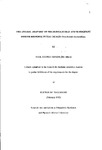THE ENTERIC DELIVERY OF MACROMOLECULES AND SUBSEQUENT IMMUNE RESPONSE IN THE CICHLID Oreochromis mossambicus
| dc.contributor.author | JENKINS, PAUL GEORGE | |
| dc.contributor.other | School of Biological and Marine Sciences | en_US |
| dc.date.accessioned | 2013-11-06T11:27:23Z | |
| dc.date.available | 2013-11-06T11:27:23Z | |
| dc.date.issued | 1992 | |
| dc.identifier | NOT AVAILABLE | en_US |
| dc.identifier.uri | http://hdl.handle.net/10026.1/2626 | |
| dc.description.abstract |
Enhanced enteric delivery systems were examined in the cichlid Oreochromis mossambicus to evaluate the requirements for potential oral vaccination strategies in teleost fish. Human gamma globulin (HGG) was delivered enterically (orally or anally) to the intestine of O.mossambicus as a standard test antigen. The co-administration of the saponin Quillaja saponaria (Quil-A) was evaluated as a novel oral adjuvant, delivered with the antigen in a soluble form and also as a delivery vehicle in the form of micelles and immunestimulatory complexes (ISCOMS). HGG absorption across the intestine was monitored utilising sensitive immunocytochemical techniques which showed that the enterically delivered antigen was transcytosed in a temporally complex manner, underwent extensive interaction with the enterocytes and gut-associated lymphoid tissue (GALT) cells and was eventually transported to the vicinity of the intestinal circulatory system Co-administration of Quil-A resulted in an increase in the HGG absorbed, increased antigen localisation in the lamina propria and substantial interaction of the adjuvant with the enterocyte lumenal membranes. The levels of HGG absorbed into the plasma were directly quantified by enzyme-linked immunosorbent assay (ELISA) and showed that administration of Quil-A concurrently with HGG greatly increased absorption above levels observed without adjuvant in the delivery system. Western blotting and laser densitometry demonstrated that HGG was absorbed as both an intact macromolecular antigen and as fragmented epitopes of distinct molecular weights. The fragmentation of the enterically delivered HGG was modified by the delivery of Quil-A suggesting that manipulation of conformational aspects of the delivered antigen may be possible. The systemic and mucosal immune responses to HGG administration were monitored and enteric immunisation of antigen with Quil-A was found to be effective in increasing specific antibody levels in the plasma, bile and cutaneous mucus of immunised fish. Preliminary studies on the use of cholera toxin β-subunit, aluminium hydroxide and ammonium chloride showed that cholera toxin β-subunit acted to increase both level of absorbed antigen, after enteric delivery and the subsequent immune response to HGG whereas the other two adjuvants were unable to mediate any such responses. | en_US |
| dc.description.sponsorship | Plymouth Marine Laboratory | en_US |
| dc.language.iso | en | en_US |
| dc.publisher | University of Plymouth | en_US |
| dc.title | THE ENTERIC DELIVERY OF MACROMOLECULES AND SUBSEQUENT IMMUNE RESPONSE IN THE CICHLID Oreochromis mossambicus | en_US |
| dc.type | Thesis | en_US |
| plymouth.version | Full version: final and full version as approved by the examiners at the time of the award of your degree | en_US |
| dc.identifier.doi | http://dx.doi.org/10.24382/1291 | |
| dc.identifier.doi | http://dx.doi.org/10.24382/1291 |
Files in this item
This item appears in the following Collection(s)
-
01 Research Theses Main Collection
Research Theses Main


